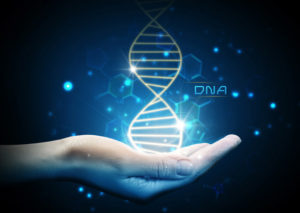
Modern medicine likes to tell you that chronic diseases are in your genes. Maybe you’re worried about inheriting your mother’s cancer, or your father’s heart disease, or your grandmother’s arthritis.
I never bought into that.
I tell my patients that they aren’t “destined” to get any modern diseases. These are the results of your primal body coming up against a hostile environment.
Genes are only part of the equation. External influences like diet and environment affect how your genes express themselves.
I have seen it many times with my own patients. And the scientific area of “epigenetics” proves what I’ve always believed: external factors can switch “good” genes on and “bad” genes off.
If you can control how those external factors impact your body, you have the power to reprogram your own DNA.
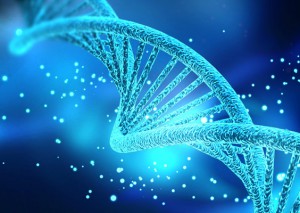
That means you can “instruct” your body to slow aging, live longer and prevent diseases. And now, an emerging field of anti-aging medicine called gene therapy let’s you do just that.
If you were one of the guests at my recent Palm Beach Anti-Aging Summit, you would have been lucky enough to see the presentation by Elizabeth Parrish, the founder and chief executive of BioViva Sciences. Earlier this year, Elizabeth made medical history by becoming the first person to be treated with gene therapy to reverse biological aging.
BioViva is currently developing gene therapies to reverse debilitating age-related diseases, like cancer, heart disease, diabetes, arthritis and Alzheimer’s disease.
Let me explain how it works…
Express Your Best Self
Your genes provide the basic biological code for determining your cells’ functions, including those that control aging and disease.
You see, inside your genes is a sophisticated network of chemical switches that surround your DNA and turn genes “on” and “off.”
BioViva has found a way to influence genetic
expression by cellular intervention. By using carrier viruses, they can shuttle DNA directly into a patient’s cells to modulate which genes are expressed and which ones aren’t.This leading-edge therapy is the start of a new era of regenerative medicine, where patients receive cellular-level genetic modifications — not just to treat disease, but to reverse aging.
These chemical switches are also sensitive to your external environment. So whatever you put into your body and come into contact with also has the power to turn genes on and off.
The bad news is our modern world is filled with triggers that turn good genes off and bad genes on, leading to a negative genetic expression and ultimately disease.
These bad triggers include processed foods, refined grains and sugars, along with heavy metals and harmful chemicals that surround us in our environment every minute of every day.
But as I tell my patients, the positive expressions of your DNA are under your control. And taking control of your genetic code is easier than you think…
All-Natural Gene Therapy
You can’t change the genes you’re born with. But you can change how they are expressed over the course of your life — through nutrition and exercise.

First, make sure you eat whole, unprocessed foods similar to the diet of our ancient ancestors. Choose healthy proteins, like grass-fed beef and wild-caught fish.
Avoid sugars and other high-carbohydrate foods. Also, add leafy green vegetables and berries to your diet.
Second, keep your heart and lungs powerful by doing short, vigorous bursts of exercise 4-6 days per week. Exercise like my PACE program will not only prevent a host of diseases on its own, it’ll also make your body better able to respond to negative environmental factors.
Finally, you should supplement with a couple of key nutrients that are proven to positively affect gene expression:
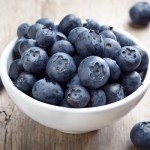
Pterostilbene – This nutrient is clinically proven to modulate gene expression directly related to longevity, including genes that induce the death of cancer cells, reduce inflammation and lower blood sugar.iiiiii
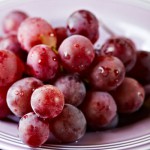
I recommend that you get 50 mg of pterostilbene per day. You can get small amounts of it in fruit like blueberries and red grapes, but it’s nearly impossible to get enough from food alone. That’s why I recommend a supplement.
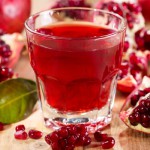
Pomegranate juice – Studies show pomegranate juice protects against cancer, type 2 diabetes, atherosclerosis, and other disorders is by inducing beneficial alterations in gene expression. Look for cold-pressed, organic pomegranate juice with no syrups or sweeteners. You can find it online and in most health food stores.
By following these simple steps, you’ll boost your chances of living a longer, healthier, disease-free life.ivvviviiviii
To Your Good Health,

Al Sears, MD, CNS
iPari L, Satheesh MA. Effect of pterostilbene on hepatic key enzymes of glucose metabolism in streptozotocin- and nicotinamide-induced diabetic rats. Life Sci. 2006 Jul 10;79(7):641-5. Epub 2006 Apr 17.
iiCichocki M1, Paluszczak J, Szaefer H, Piechowiak A, Rimando AM, Baer-Dubowska W. Pterostilbene is equally potent as resveratrol in inhibiting 12-O-tetradecanoylphorbol-13-acetate activated NFkappaB, AP-1, COX-2, and iNOS in mouse epidermis. Nutr Food Res. 2008 Jun;52 Suppl 1:S62-70. doi: 10.1002/mnfr.200700466.
iiiKim JS, Ha TY, Ahn J, Kim HK, Kim S. Pterostilbene from Vitis coignetiae protect H2O2-induced inhibition of gap junctional intercellular communication in rat liver cell line. Food Chem Toxicol. 2009 Feb;47(2):404-9. doi: 10.1016/j.fct.2008.11.038. Epub 2008 Dec 7.
ivAdams LS, Seeram NP, Aggarwal BB, Takada Y, Sand D, Heber D. Pomegranate juice, total pomegranate ellagitannins, and punicalagin suppress inflammatory cell signaling in colon cancer cells. J Agric Food Chem. 2006 Feb 8;54(3):980-5.
vAlbrecht M, Jiang W, Kumi-Diaka J, Lansky EP, Gommersall LM, Patel A, Mansel RE, Neeman I, Geldof AA, Campbell MJ. Pomegranate extracts potently suppress proliferation, xenograft growth, and invasion of human prostate cancer cells. J Med Food. 2004 Fall;7(3):274-83.
vide Nigris F, Balestrieri ML, Williams-Ignarro S, D’Armiento FP, Fiorito C, Ignarro LJ, Napoli C. Nitric Oxide. The influence of pomegranate fruit extract in comparison to regular pomegranate juice and seed oil on nitric oxide and arterial function in obese Zucker rats. Nitric Oxide. 2007 Aug;17(1):50-4. Epub 2007 May 5.
viide Nigris F, Williams-Ignarro S, Sica V, Lerman LO, D’Armiento FP, Byrns RE, Casamassimi A, Carpentiero D, Schiano C, Sumi D, Fiorito C, Ignarro LJ, Napoli C. Effects of a pomegranate fruit extract rich in punicalagin on oxidation-sensitive genes and eNOS activity at sites of perturbed shear stress and atherogenesis. Cardiovasc Res. 2007 Jan 15;73(2):414-23. Epub 2006 Sep 1.
viiiRosenblat M, Hayek T, Aviram M. Anti-oxidative effects of pomegranate juice (PJ) consumption by diabetic patients on serum and on macrophages. Atherosclerosis. 2006 Aug;187(2):363-71. Epub 2005 Oct 13.

